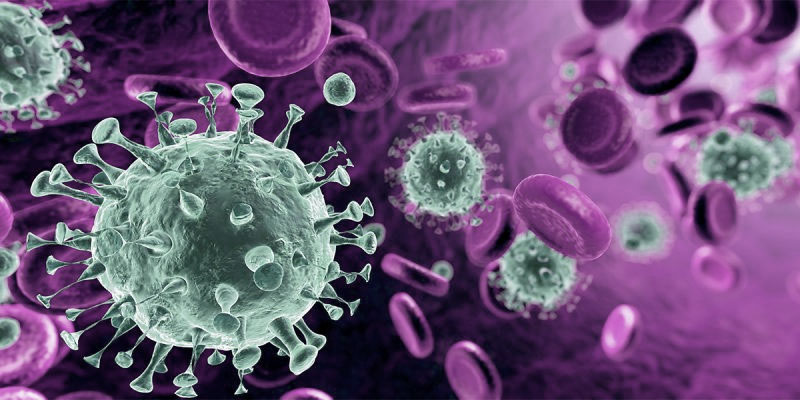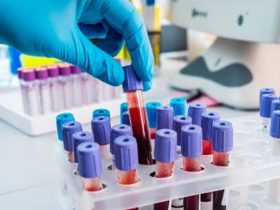A dynamic set of 28 clinical statements guide health care professionals in overcoming obstacles related to providing optimal cancer care in the presence of COVID-19.
Shortly after COVID-19 shook the world and globally triggered a tsunami of questions, a European Society for Medical Oncology (ESMO) interdisciplinary consortium gathered to adapt existing cancer care protocol and mitigate the negative effects of the pandemic on cancer patient treatment management. The resulting paper includes 28 clinical statements established to guide health care professionals in overcoming many of the clinical and technical obstacles related to diagnosis, risk assessment, response assessment, surgical planning, radiation therapy, and medical treatment during the COVID-19 pandemic. The paper was published in the Annals of Oncology.1
As this era of anxiety escalated, the ESMO experts gathered again to revisit their cancer care recommendations and confirm that everything aligned with evolving data. The reboot stands pat on two critical guidelines.
- Medical oncologists should not discontinue or delay anti-cancer treatment that may potentially impact overall survival. To date, there is a lack of data to suggest that immune checkpoint inhibitors, non-cytotoxic targeted therapies, and some types of adjuvant or neoadjuvant systemic therapies are associated with a higher incidence of COVID-19-related complications and mortality.1
- Do not label all cancer patients as more vulnerable than the general population to COVID-19 infection. Perpetuating this unproven assumption could, in fact, lead to inappropriate care and potential negative outcomes.1
“In our opinion, no two cancer patients are alike and we need to individualize the treatment plan with case-by-case discussions led by multidisciplinary teams to balance the risk of being infected against tumor control,” stresses Giuseppe Curigliano, MD, Ph.D., first author of the ESMO recommendations, Associate Professor of Medical Oncology at the University of Milano, Head of the Division of Early Drug Development at the European Institute of Oncology, IRCCS, Italy, and ESMO Chair of the Guidelines Committee. “At this point, cancer patients we consider vulnerable to the infection are elderly, have multiple comorbidities, and are receiving chemotherapy. In this population, before starting any treatment, we recommend testing patients for COVID-19 with a real-time RT-PCR (reverse transcription polymerase chain reaction) in order to exclude that the patient is infected by SARS-CoV-2.”
Conversely, Dr. Curigliano adds, the ESMO guidelines recommend that “a cancer patient who’s absolutely fit and not at high risk for infection has no absolute restrictions in treatment choice or timeline.”
Take Two
Back in early 2020, it was widely assumed that cancer patients had an increased risk for infection with SARS-CoV-2 and this population was also likely to present a more severe disease course, with a higher proportion of patients requiring greater levels of intensive care, exhibiting a more rapidly evolving disease, and demonstrating an increased risk of death. In response, medical oncologists swiftly adapted cautionary changes in cancer management for all cancer types, which included abbreviated radiotherapy, oral chemotherapy regimens over intravenous, and a step away from immunotherapy.1
Time, data analysis, and observation eventually punched holes in the argument that all cancer patients are more vulnerable to COVID-19 and indiscriminately deferring to this conclusion could skew reality. As the ESMO report states, “The over-representation of older people with comorbidities and other risk factors in the cancer population are highly likely to be confounders in this association.”1
Data-based Adjustments
Since February 11, 2020, when the International Committee on Taxonomy of Viruses (ICTV) first named the new virus “severe acute respiratory syndrome coronavirus 2 (SARS-CoV-2)”, facts, figures, and guidelines have changed. That includes the ESMO recommendations to manage cancer patients during COVID-19.
“We updated some guidelines according to the RT index – the virus’s actual transmission rate at a given time,” Dr. Curigliano explains. “Originally, we graded certain treatments unsafe related to potential lung toxicity. We’ve updated those recommendations in several instances, writing that if the RT index is <1, meaning that the pandemic spread is very low, we believe you can now safely use specific agents. So the recommendations are now much more closely based on the actual patient as well as the actual pandemic scenario you have.”
As the ESMO consortium continues to assess what it means to be a cancer patient during the pandemic, guidelines will continue to evolve. In the meantime, life-saving treatment should not be delayed or discontinued; having cancer in and of itself does not appear to make a patient more vulnerable to COVID-19 or too frail to receive medical treatment; and there needs to be a conversation – virtual or in person – between physician and patient about the patient’s individual level of risk based on their condition, treatment plan, and real-time level of virus transmission in the community.
Guiding the Guidelines
The multidisciplinary European Society for Medical Oncology (ESMO) consortium was created to review relevant clinical evidence in order to develop expert consensus statements related to cancer management during the severe acute respiratory syndrome coronavirus 2-related disease (COVID-19) pandemic.
First, a 15-person steering committee prepared 10 working packages (WPs) that addressed significant clinical questions that spanned diagnosis to surgery to treatment management.
During an ESMO-led virtual consensus meeting, 62 global experts and one patient advocate discussed, amended, and voted on the initial WP statements. If a statement did not receive a consensus, it was revised until a consensus was reached.
Overall, the multidisciplinary expert panel agreed on 28 consensus statements within the 10 WPs, which are meant to help guide many of the clinical and technical areas of uncertainty, ranging from diagnosis to therapeutic planning and treatment during the COVID-19 pandemic.
Click here to view Overview of WPs and Main Statements.
The categories include:
- Strategies for patient management and follow up
- Prevention of SARS-CoV-2 infection in patients with cancer and prioritization of cancer care
- Granulocyte colony–stimulating factor (G-CSF) use and thromboprophylaxis in cancer patients during the COVID-19 pandemic: benefits, risks, impact in COVID-19–negative and COVID-19–positive patients with cancer
- COVID-19 testing: whom, when and how (polymerase chain reaction, serology)
- Use of Immunotherapy
- Use of targeted TKI therapies
- Implementation of neoadjuvant and adjuvant chemotherapy
- Radiation strategies during the COVID-19 pandemic
- Prioritization of cancer care and intensive care unit triage in patients with cancer/rehabilitation after COVID-19 infection
- Clinical trial activities in the COVID-19 era
Resources
1. Curigliano G, Banerjee S, Cervantes A, Garassino MC, Garrido P, Girard N, Haanen J, Jordan K, Lordick F, Machiels JP, Michielin O, Peters S, Tabernero J, Douillard JY, Pentheroudakis G; Panel members. Managing cancer patients during the COVID-19 pandemic: an ESMO multidisciplinary expert consensus. Ann Oncol. 2020 Oct;31(10):1320-1335. doi: 10.1016/j.annonc.2020.07.010. Epub 2020 Jul 31. PMID: 32745693. Managing cancer patients during the COVID-19 pandemic: An ESMO Interdisciplinary Expert Consensus.







